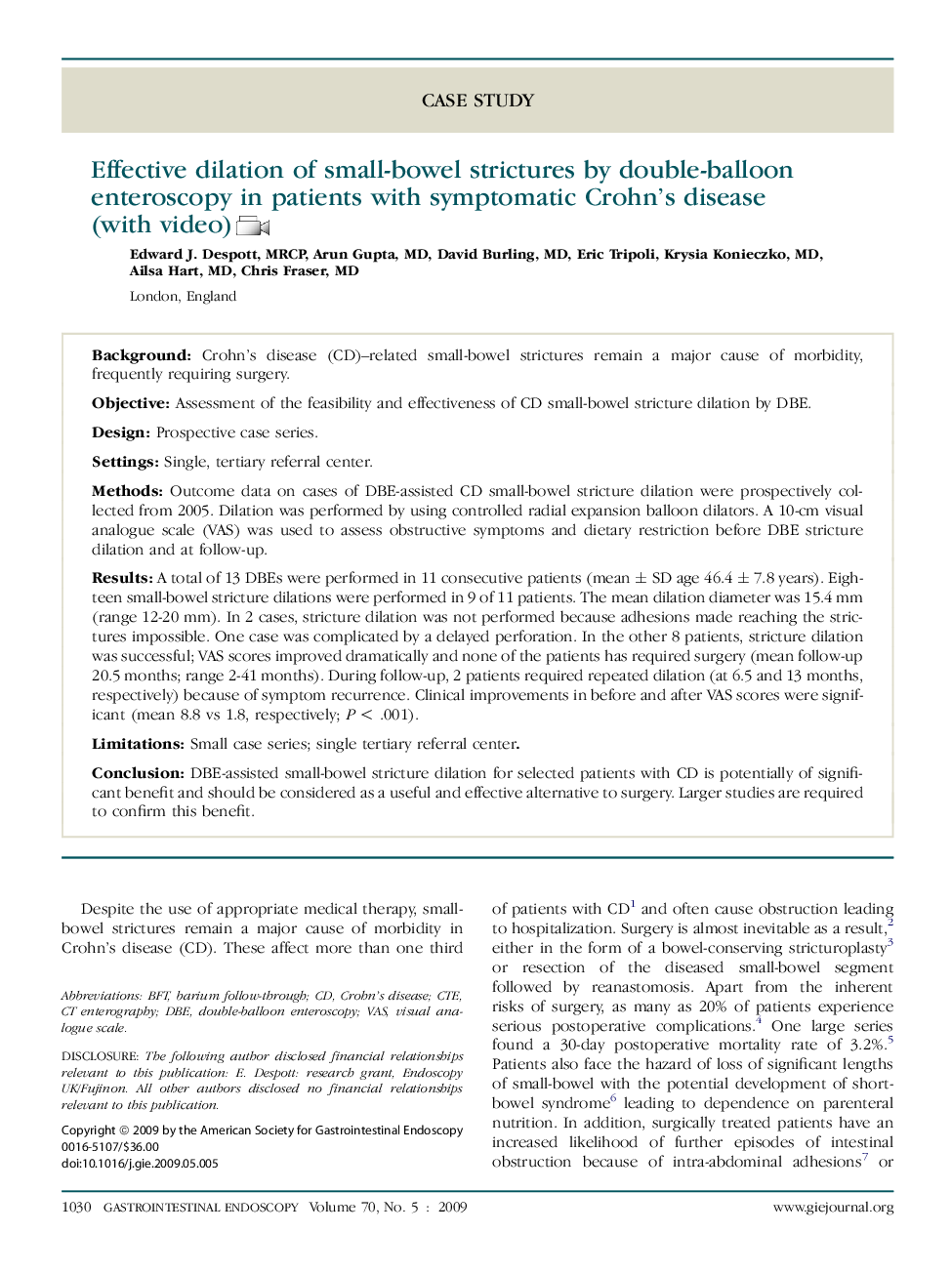| Article ID | Journal | Published Year | Pages | File Type |
|---|---|---|---|---|
| 3307537 | Gastrointestinal Endoscopy | 2009 | 7 Pages |
BackgroundCrohn's disease (CD)–related small-bowel strictures remain a major cause of morbidity, frequently requiring surgery.ObjectiveAssessment of the feasibility and effectiveness of CD small-bowel stricture dilation by DBE.DesignProspective case series.SettingsSingle, tertiary referral center.MethodsOutcome data on cases of DBE-assisted CD small-bowel stricture dilation were prospectively collected from 2005. Dilation was performed by using controlled radial expansion balloon dilators. A 10-cm visual analogue scale (VAS) was used to assess obstructive symptoms and dietary restriction before DBE stricture dilation and at follow-up.ResultsA total of 13 DBEs were performed in 11 consecutive patients (mean ± SD age 46.4 ± 7.8 years). Eighteen small-bowel stricture dilations were performed in 9 of 11 patients. The mean dilation diameter was 15.4 mm (range 12-20 mm). In 2 cases, stricture dilation was not performed because adhesions made reaching the strictures impossible. One case was complicated by a delayed perforation. In the other 8 patients, stricture dilation was successful; VAS scores improved dramatically and none of the patients has required surgery (mean follow-up 20.5 months; range 2-41 months). During follow-up, 2 patients required repeated dilation (at 6.5 and 13 months, respectively) because of symptom recurrence. Clinical improvements in before and after VAS scores were significant (mean 8.8 vs 1.8, respectively; P < .001).LimitationsSmall case series; single tertiary referral center.ConclusionDBE-assisted small-bowel stricture dilation for selected patients with CD is potentially of significant benefit and should be considered as a useful and effective alternative to surgery. Larger studies are required to confirm this benefit.
